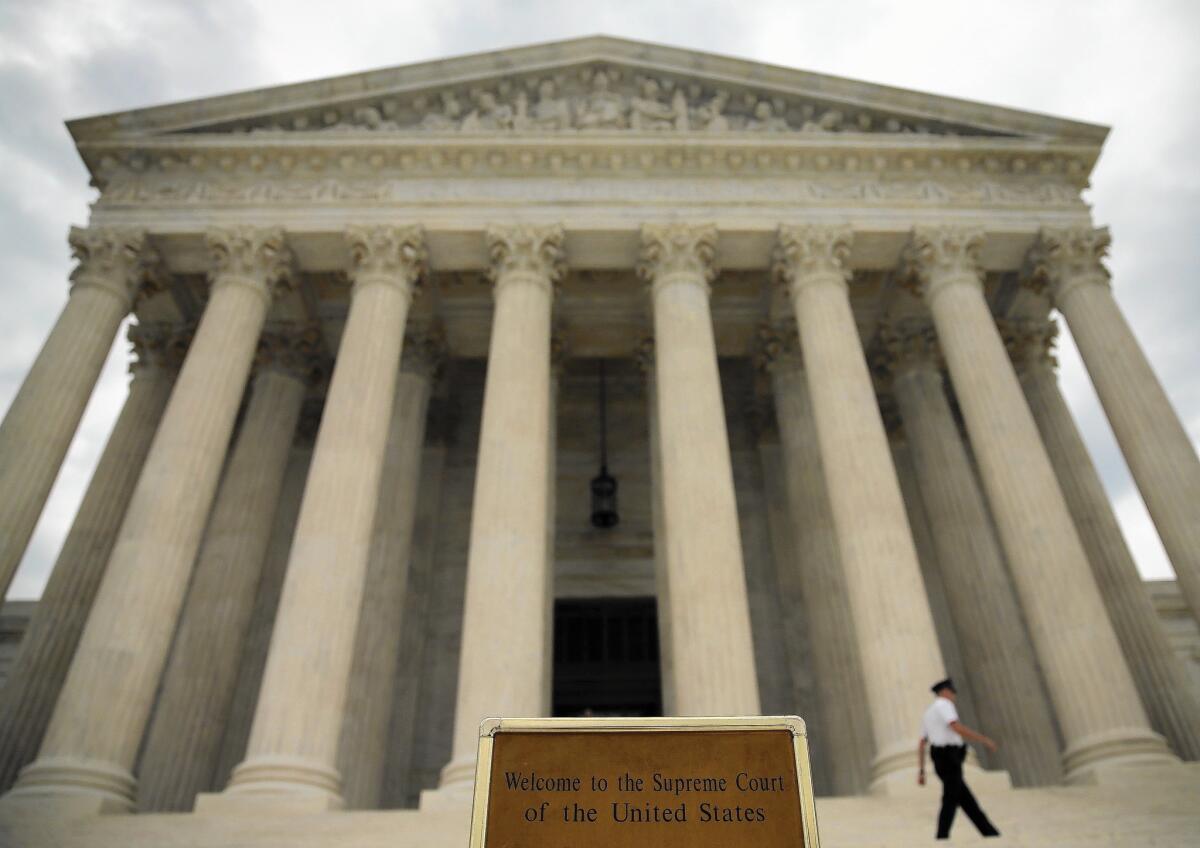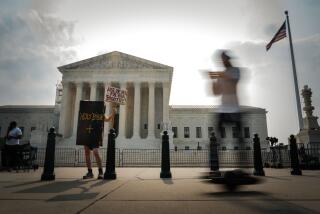Review: ‘The Case Against the Supreme Court’ pushes for reforms

Erwin Chemerinsky has made an exemplary career out of teaching, writing and lecturing about the U.S. Supreme Court. And though he has strongly liberal views, he is widely admired for his ability to explain the work of the court in a way that is thoughtful, clear and fair.
But in his new book, he says he regrets having painted “a generally favorable picture” of the court for generations of law students. “I discovered in my own mind I have been making excuses for the Court,” says Chemerinsky, dean of the UC Irvine Law School. “The Supreme Court is not the institution that I once revered.”
With the mission to set the record straight, he weighs the court’s role in America’s history and pronounces it a failure. Rather than stand up for “liberty and justice for all,” the court has regularly stood with the powerful and against the weak. The justices have ruled for slave-holders, segregationists, corporate bosses and the very wealthy, he writes, and ignored the rights of workers, consumers, dissidents and the victims of government abuse.
He cites infamous cases and lesser-known abominations. The Dred Scott decision of 1857 struck down the “Missouri Compromise” and ruled former slaves could not be free even in the “free states” of the North. The Civil War soon followed. In 1927, the American eugenics movement got a boost when the revered Justice Oliver Wendell Holmes endorsed the forced sterilization of a supposedly “feeble minded white woman” from Virginia named Carrie Buck. “Three generations of imbeciles are enough,” Holmes wrote in an opinion cited by the Nazis a decade later. And during World War II, as Americans fought overseas against the brutal racist policies of the Germans and Japanese, the Supreme Court upheld the mass detention of tens of thousands of Americans of Japanese descent on the West Coast.
And what about the Warren Court? Chemerinsky agrees the court of the 1950s and ‘60s is the great exception. It began with the Brown v. Board of Education ruling that declared racial segregation unconstitutional. And in the years that followed, the liberal majority struck down poll taxes, wielded the “one person, one vote” rule to equalize political power in the states and breathed new life into the Constitution’s protections for accused criminals.
“These three areas — ending segregation, increasing equality in voting and expanding the rights of criminal defendants — are unquestionably successes for the Supreme Court that made society better,” he writes.
But the progressive court did not accomplish as much as it could have, he says. For one, it did little to enforce the desegregation of schools. And the progressive era did not last long. Richard Nixon ran for president in 1968 on a “law and order” platform and blamed the liberal court for the rising tide of crime and violence in America’s cities. He also replaced four justices in his first term. By the mid-1970s, the liberal era was over.
Since Nixon’s election, the court has had three chief justices, all of them conservative Republicans. Warren Burger was Nixon’s choice to replace Earl Warren. William Rehnquist, a Nixon appointee, was elevated by Ronald Reagan. And John Roberts, a former Rehnquist clerk, was chosen by George W. Bush.
When Chemerinsky turns to the Roberts Court, he shows its leanings are in line with much of what has come before. In recent years, the court has blocked lawsuits against corporations and high government officials and struck down campaign-funding laws so as to give corporations and the wealthy more freedom to use money to sway elections. It voided a key part of the Voting Rights Act and barred about 1.6-million women employees from suing Wal-Mart for unequal pay.
Chemerinsky concedes he will be accused of “liberal whining.” And conservatives will note he has little to say about disputed decisions such as the Roe v. Wade ruling that legalized abortion or the more recent gay-rights rulings.
So why write a book-length brief against the Supreme Court? For one, Chemerinsky retains hope the court will do better, and a few reforms could help. The justices should be more open and transparent, he says, including allowing TV broadcasts of their oral arguments. He also backs a proposal floated by, among others, Texas Gov. Rick Perry that would limit each justice to an 18-year term. Under this plan, which requires amending the Constitution, a president would nominate a new justice every two years to replace one whose term had ended.
“If Rick Perry and I agree, likely many others will, too,” he writes.
Beyond the proposed reforms, Chemerinsky says he yearns for more honest and candid talk about the court. He smacks Chief Justice Roberts and Justice Sonia Sotomayor for telling the Senate they would simply follow the law, or “call the balls and strikes,” as Roberts put it.
“It is time to get past the façade of the marble columns and the mystique of justices who appear in robes from beyond heavy curtains,” he writes. The justices do not “find” the law hidden deep in the text, he says. Rather, they decide the law and do so based on their own values and understandings. “If we see the Court in this way, we can begin to hold it accountable for its own decisions,” he concludes.
Savage is the Supreme Court correspondent for the Los Angeles Times.
The Case Against the Supreme Court
Erwin Chermerinsky
Viking: 386 pp., $30
More to Read
Sign up for our Book Club newsletter
Get the latest news, events and more from the Los Angeles Times Book Club, and help us get L.A. reading and talking.
You may occasionally receive promotional content from the Los Angeles Times.







